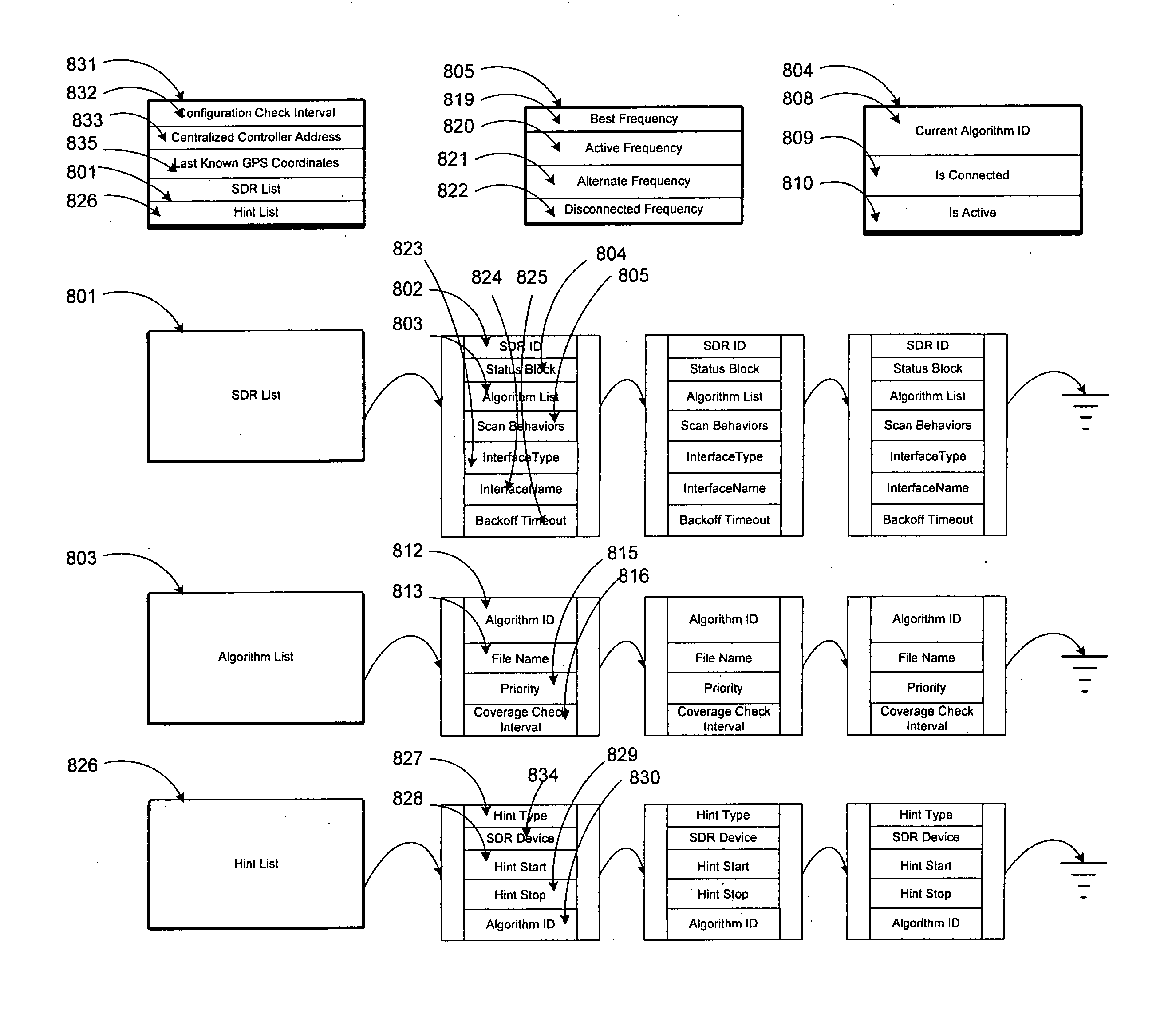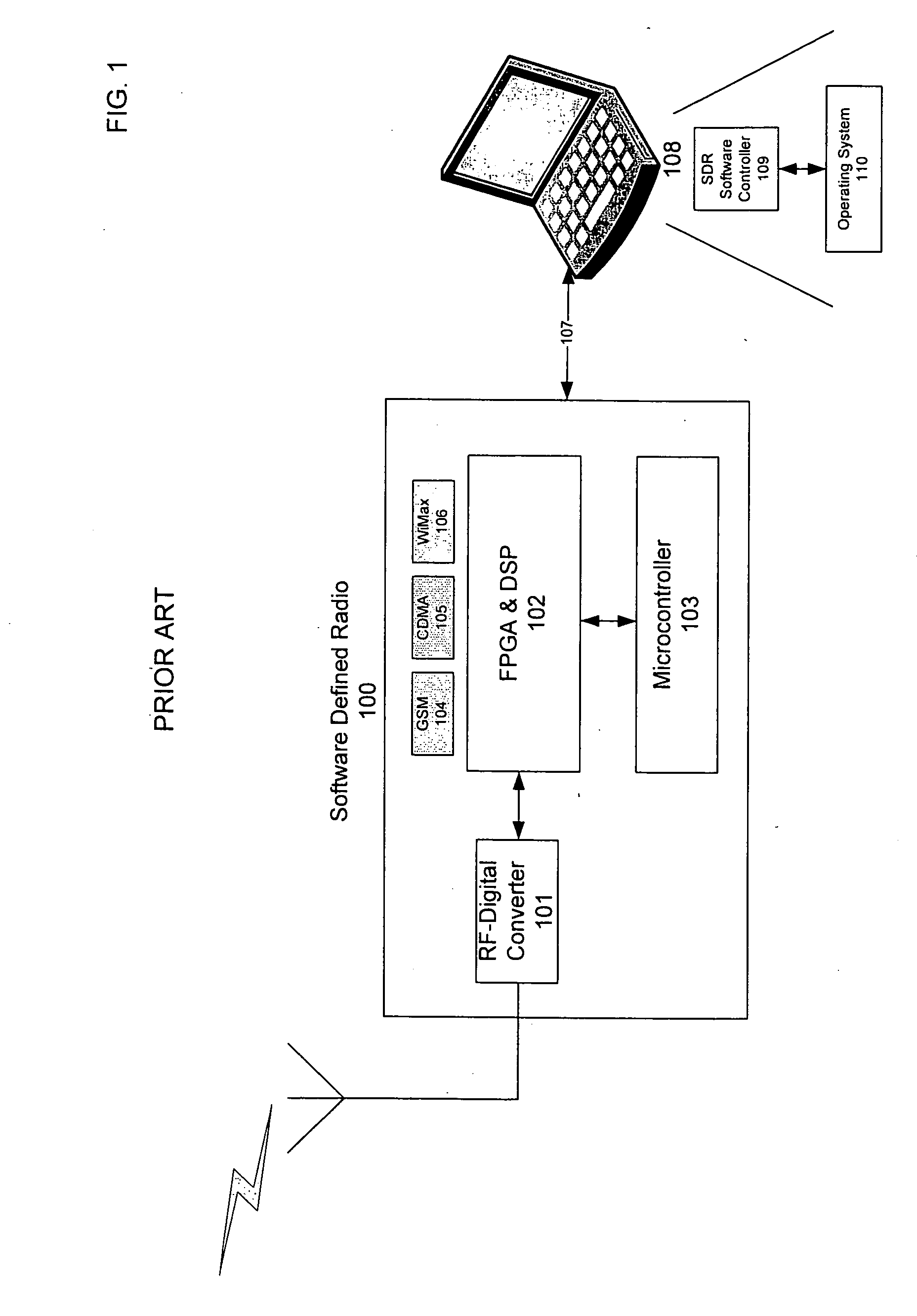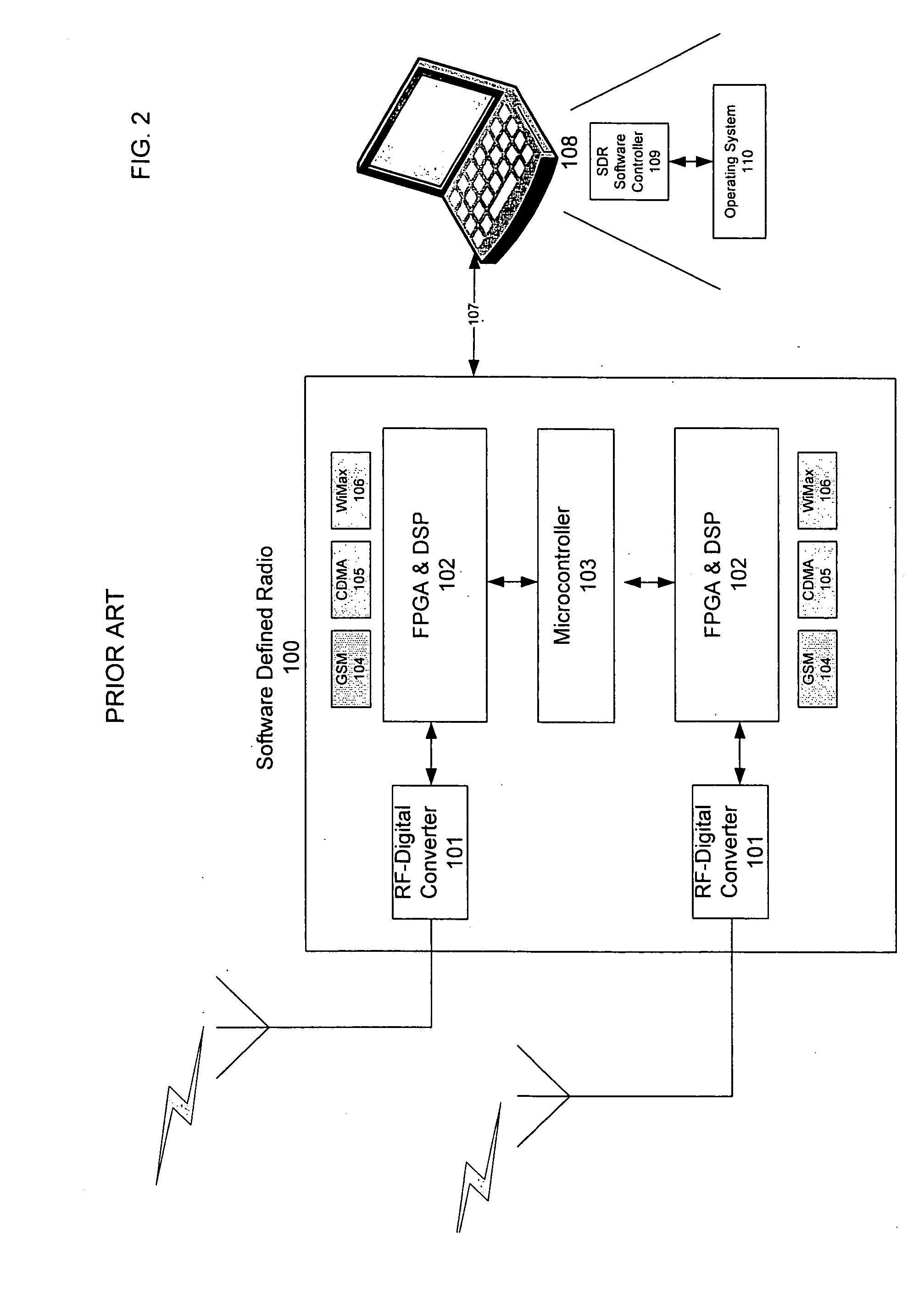Multi-network seamless roaming through a software-defined-radio
a software-defined radio and multi-network technology, applied in the field of wireless communication, can solve the problems of multiple communication devices consuming precious battery life, multiple distinct communication devices may also require excessive physical resources, and multiple communication devices in active state consume precious battery life, so as to achieve the effect of minimizing packet loss
- Summary
- Abstract
- Description
- Claims
- Application Information
AI Technical Summary
Benefits of technology
Problems solved by technology
Method used
Image
Examples
Embodiment Construction
System Architecture:
[0065] An SDR Software Controller 109 can operate in a standalone fashion as indicated in FIG. 1, FIG. 2, and FIG. 3. Nonetheless, often an SDR Software Controller 109 is used in conjunction with a wireless router. An exemplary router is described in U.S. Pat. Nos. 6,198,920 and 6,418,324 discussed above, the disclosures of which are expressly incorporated by reference herein in their entireties. FIG. 5 shows an example of communications between a router 35 and the SDR Software Controller system 109. FIG. 5 also shows an example of communications between another router 36 and an SDR Centralized Software Controller Subsystem 111. The system also includes a mobile application 201 and a host application 202. The system also includes a Traditional Radio 112 and a Software Defined Radio 100. The system also includes three dissimilar networks 204, 205, and 206.
[0066] The router 35 communicates directly to the Traditional Radio 112 for the purpose of establishing a v...
PUM
 Login to View More
Login to View More Abstract
Description
Claims
Application Information
 Login to View More
Login to View More - R&D
- Intellectual Property
- Life Sciences
- Materials
- Tech Scout
- Unparalleled Data Quality
- Higher Quality Content
- 60% Fewer Hallucinations
Browse by: Latest US Patents, China's latest patents, Technical Efficacy Thesaurus, Application Domain, Technology Topic, Popular Technical Reports.
© 2025 PatSnap. All rights reserved.Legal|Privacy policy|Modern Slavery Act Transparency Statement|Sitemap|About US| Contact US: help@patsnap.com



